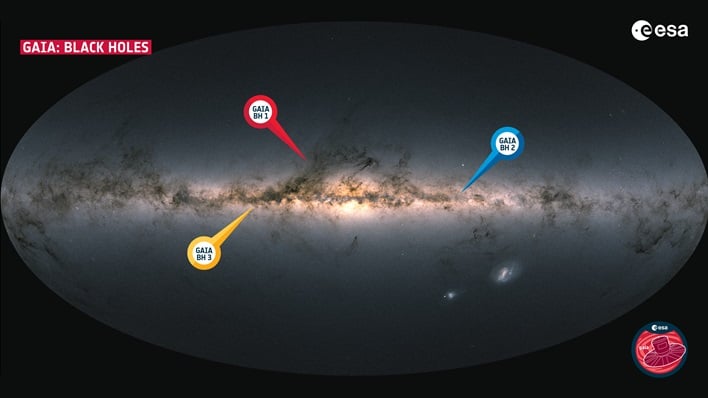Scientists Shocked To Discover A Monster Black Hole In Our Own Cosmic Backyard

The discovery marks the first time a black hole of stellar origin has been detected within the Milky Way. The finding has challenged the understanding of how massive stars develop and evolve. It was found in data from ESA’s Gaia mission because it introduces an odd “wobbling” motion on the companion star orbiting it. Scientists and astronomers were able to use data from the European Southern Observatory’s Very Large Telescope (ESO’s VLT) and other ground-based observatories to verify the mammoth black hole’s mass.
Stellar black holes of this nature are said to form from the collapse of massive stars. The size of the newly detected massive stellar black hole dwarfs all the others known in the Milky Way galaxy, even the next closest, Cygnus X-1, which only reaches 21 solar masses.
“No one was expecting to find a high-mass black hole lurking nearby, undetected so far,” remarked Gaia collaboration member Pasquale Panuzzo. “This is the kind of discovery you make once in your research life.”
Until now, astronomers have only found similar massive black holes outside the Milky Way. Scientists have theorized that these may have formed when because of a the collapse of stars with very few elements heavier than hydrogen and helium in their chemical composition. Because these stars are believed to be so-called metal-poor stars, they are thought to lose less mass throughout their lifetime. This left over material is what scientists believe produces high-mass black holes after the stars death.
“We took the exceptional step of publishing this paper based on preliminary data ahead of the forthcoming Gaia release because of the unique nature of the discovery,” explained co-author Elisabetta Caffau, also a Gaia collaboration member.
More observations of the newly detected massive stellar black hole will surely follow using other observatories, such as the GRAVITY instrument on ESO’s VLT Interferometer. As with so many other new discoveries being made in space, this will help scientists and astronomers to better understand what is truly at play in the vastness of space.


